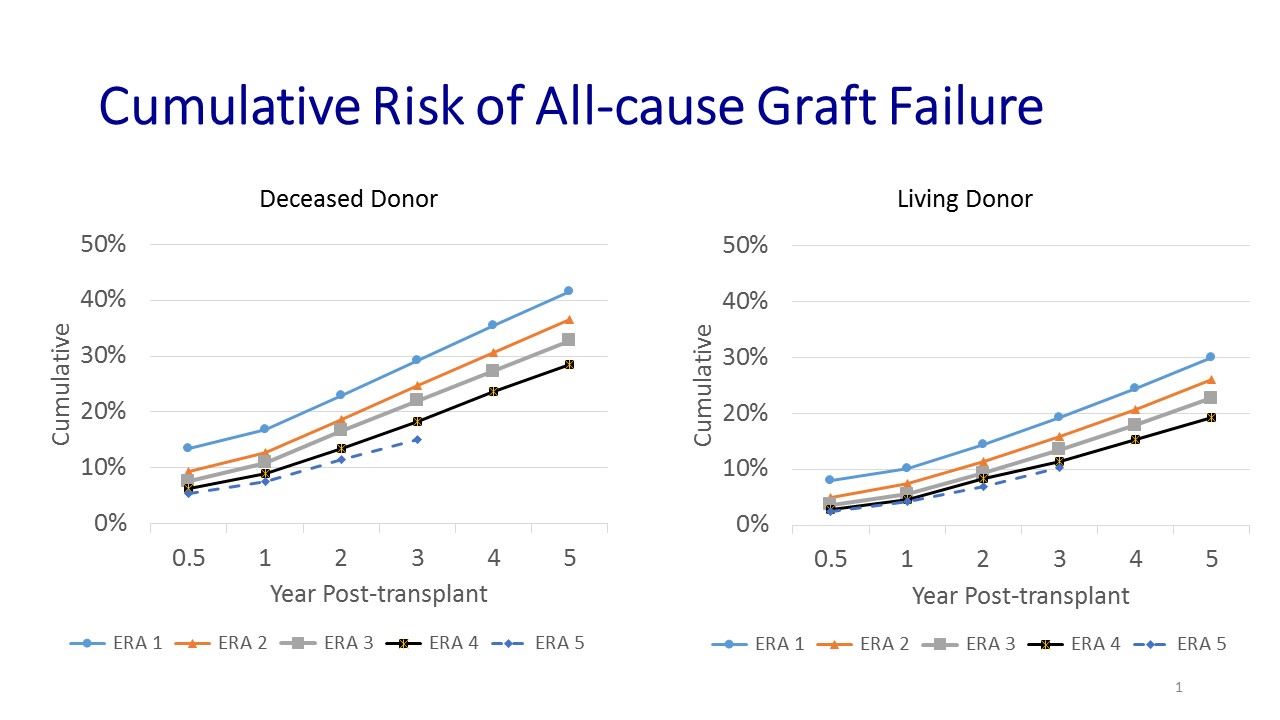Twenty Year Trends in Outcomes and Costs Following Kidney Transplantation.
1University of Arizona Health Sciences, Phoenix, AZ
2Novartis Pharmaceuticals Corporation, East Hanover, NJ
3CTI Clinical Trial and Consulting Services, Inc., Cincinnati, OH
Meeting: 2017 American Transplant Congress
Abstract number: 520
Keywords: Economics, Graft survival, Medicare, Outcome
Session Information
Session Name: Concurrent Session: Kidney General Outcomes
Session Type: Concurrent Session
Date: Tuesday, May 2, 2017
Session Time: 4:30pm-6:00pm
 Presentation Time: 5:18pm-5:30pm
Presentation Time: 5:18pm-5:30pm
Location: E354a
Purpose. Short term outcomes of kidney transplantation (KTx) are excellent, but it is unclear that long term outcomes have improved, despite advances in immunosuppression (IS). The purpose of this study was to examine historical trends in clinical outcomes and healthcare costs using data from the United States Renal Data System (USRDS).
Methods. We examined adult primary Medicare beneficiaries in the USRDS who received a kidney-only transplant from 1992-2012, excluding pediatric recipients, and multi-organ and preemptive transplants. Clinical outcomes included risks of all-cause graft failure. Total costs were derived from Medicare claims (Part A and B) and adjusted using the medical care component of the US Consumer Price Index. Trends were evaluated using transplant periods (Eras 1-5): 1992-1996, 1997-2002, 2003-2006, 2007-2009 and 2010-2012. Eras were chosen to reflect major KTx milestones. Kaplan-Meier method was used to estimate the risks of all-cause graft failure.
Results. Of the N=134,679 patients (77%/23% deceased donor [DD]/living donor [LD]), 21%, 27%, 21%, 16% and 16% were in Eras 1, 2, 3, 4, and 5. Donors were older, and for DDs, had an increasing prevalence of hypertension with greater use of donation after cardiac death and extended-criteria donor organs. Recipients were older, had increasing prevalence of diabetes, hypertension, and cardiovascular events, higher BMI and total number of HLA-ABDR mismatches. Maintenance IS shifted from cyclosporine- to tacrolimus-based regimens with decreased use of corticosteroids. Cumulative risk of all-cause graft failure, by DD and LD KTx is shown in Figure 1. Cumulative costs from time of KTx declined across all Eras. In DD KTx, relative to Era 1, costs declined by an average of 5%, 14% and 16% (over 3 years) in Eras 2, 3 and 4, respectively and 24% (over 2 years) in Era 5.
Conclusions. Outcomes of KTx have improved significantly across Eras with lower costs, especially in DD KTx, despite the worsening donor/recipient risk profiles. 
CITATION INFORMATION: Ojo A, Agashivala N, Gache L, Irish W. Twenty Year Trends in Outcomes and Costs Following Kidney Transplantation. Am J Transplant. 2017;17 (suppl 3).
To cite this abstract in AMA style:
Ojo A, Agashivala N, Gache L, Irish W. Twenty Year Trends in Outcomes and Costs Following Kidney Transplantation. [abstract]. Am J Transplant. 2017; 17 (suppl 3). https://atcmeetingabstracts.com/abstract/twenty-year-trends-in-outcomes-and-costs-following-kidney-transplantation/. Accessed December 27, 2025.« Back to 2017 American Transplant Congress
